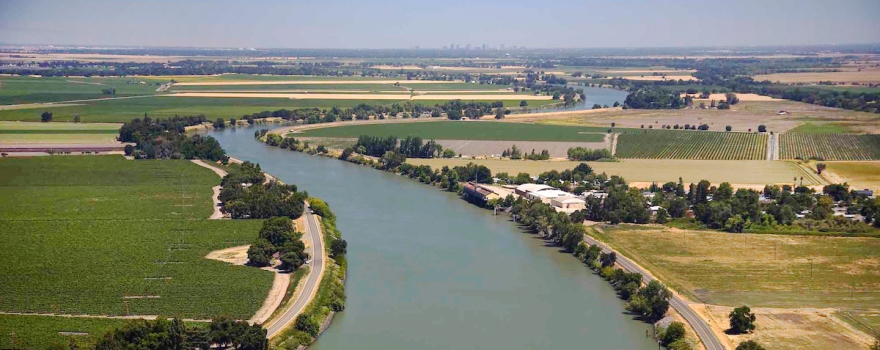
In January of 2013, a symposium hosted by Delta Science Program and the UC Davis Center for Aquatic Biology and Aquaculture (CABA) titled, What is a Natural Hydrograph in Regulated Rivers? The Science of Natural Flows to the Delta, explored how the hydrologic regime of Delta inflows are impacted by land-use changes, diversions from the watershed, and climate change.
In this last installment, Dr. Clifford Dahm presents examples on how other regions here in the US and around the world are dealing with the issue of flows in regulated rivers, and the conference concludes with a panel discussion.
DR. CLIFFORD DAHM: Examples of Managed Flow Regimes – Possible Models for the Delta?
 Dr. Clifford Dahm began by noting that his presentation will present possible models for the Delta, drawing on some of the work he’s done over the last 15 years relating to the issue of flows and setting flow criteria in systems that have a high degree of human impact and human management.
Dr. Clifford Dahm began by noting that his presentation will present possible models for the Delta, drawing on some of the work he’s done over the last 15 years relating to the issue of flows and setting flow criteria in systems that have a high degree of human impact and human management.
Dr. Dahm gave five short vignettes to spotlight the work being done to set flow criteria for rivers from South Florida, New Mexico, Texas, the Murray-Darling Basin in Australia, and South Africa.
Click here to continue reading this presentation.
PANEL DISCUSSION: The science of natural functional flows to the Delta
“Some would argue that more storage in the system would actually benefit native species and our ability to provide environmental flows,” began moderator Chris Enright.  “It could be that would allow us to harvest wet year flows. So, additional storage allows us to do that. It allows us, perhaps, to have water for drier years. One thing we also know in this system is when wet years happen, good ecology happens. We generally have high abundances of all of our native species. The question is, do we maintain wet years as natural flow years or do we harvest those years and use those waters in other year times, perhaps dry year types?”
“It could be that would allow us to harvest wet year flows. So, additional storage allows us to do that. It allows us, perhaps, to have water for drier years. One thing we also know in this system is when wet years happen, good ecology happens. We generally have high abundances of all of our native species. The question is, do we maintain wet years as natural flow years or do we harvest those years and use those waters in other year times, perhaps dry year types?”
“Dr. Petts talked about a smart flow regime that would identify base flows and protect those, identify flood flows and protect those, and then, allow for some percentage of sort of natural flow pattern in the mid range. So, there are lots of perspectives. Harvest wet flows. Protect that diversity of hydrologic input. Protect those at a disturbance regime.
“So, the question to the panel, based on what you’ve heard and based on just common sense about smart flows, if we were to protect a portion of the hydrograph in its more natural state, what would we look to first? What water year types?”
Click here to continue reading the panel discussion.
FOR MORE INFORMATION …
- To view the webcast and power point presentations, click here.
- To read all coverage of the Flows Symposium on Maven’s Notebook, click here.

